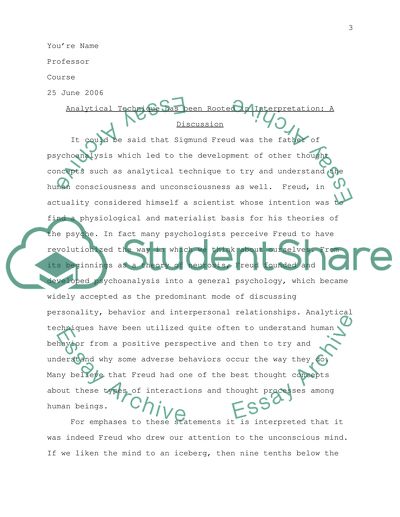Cite this document
(“Analytical Technique has been Rooted in Interpretation: A Discussion Essay”, n.d.)
Analytical Technique has been Rooted in Interpretation: A Discussion Essay. Retrieved from https://studentshare.org/miscellaneous/1533843-analytical-technique-has-been-rooted-in-interpretation-a-discussion-of-this-idea
Analytical Technique has been Rooted in Interpretation: A Discussion Essay. Retrieved from https://studentshare.org/miscellaneous/1533843-analytical-technique-has-been-rooted-in-interpretation-a-discussion-of-this-idea
(Analytical Technique Has Been Rooted in Interpretation: A Discussion Essay)
Analytical Technique Has Been Rooted in Interpretation: A Discussion Essay. https://studentshare.org/miscellaneous/1533843-analytical-technique-has-been-rooted-in-interpretation-a-discussion-of-this-idea.
Analytical Technique Has Been Rooted in Interpretation: A Discussion Essay. https://studentshare.org/miscellaneous/1533843-analytical-technique-has-been-rooted-in-interpretation-a-discussion-of-this-idea.
“Analytical Technique Has Been Rooted in Interpretation: A Discussion Essay”, n.d. https://studentshare.org/miscellaneous/1533843-analytical-technique-has-been-rooted-in-interpretation-a-discussion-of-this-idea.


